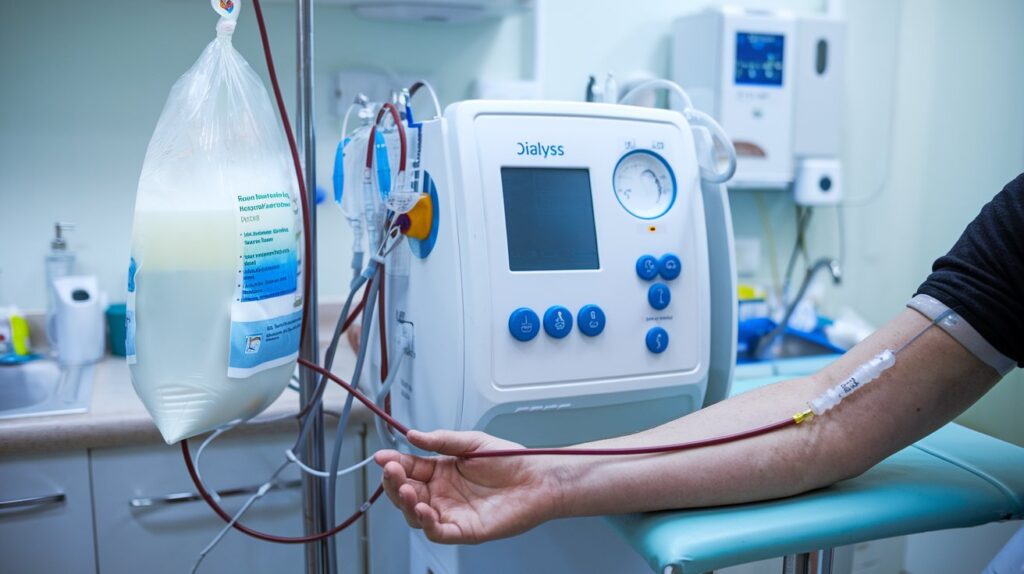Introduction to Acute Renal Replacement Therapy
Acute Renal Replacement Therapy (ARRT) is a life-saving treatment for patients with severe kidney problems. This therapy helps to filter and clean the blood when the kidneys are not functioning properly. Understanding ARRT is crucial for patients, families, and healthcare providers. This article will explain what ARRT is, how it works, and why it is essential for those with acute kidney injury (AKI).
What is Acute Renal Replacement Therapy?
Understanding ARRT
Acute Renal Replacement Therapy (ARRT) is a medical procedure used to support patients with acute kidney injury (AKI). AKI is a sudden loss of kidney function, which can be life-threatening if not treated promptly. ARRT helps by performing the functions of the kidneys, such as filtering waste products and excess fluids from the blood.
Types of ARRT
There are different types of ARRT, including Continuous Renal Replacement Therapy (CRRT) and intermittent hemodialysis. CRRT is a 24-hour, non-stop dialysis therapy often used in intensive care units (ICUs) for critically ill patients. Intermittent hemodialysis, on the other hand, is performed several times a week for a few hours each session.
How Does ARRT Work?

The Process
ARRT involves using a machine to filter the blood. A central venous catheter (CVC) is placed in one of the patient’s large veins. The CVC is connected to a machine that circulates the blood in a loop outside the body, where it is filtered and cleaned before being returned to the patient.
The Role of the Machine
The machine used in ARRT is operated by specially trained nurses in the ICU. It gently removes waste products and extra fluids from the blood, helping to keep chemicals and electrolytes, like potassium and phosphorus, balanced.
Monitoring and Adjustments
As the patient’s condition improves, the medical team may adjust the therapy. They might try giving the patient some time off from ARRT to see if the kidneys can function on their own. If kidney support is still needed, the patient may continue with ARRT or switch to a less frequent type of dialysis called hemodialysis.
Why is ARRT Important?
Benefits of ARRT
ARRT is crucial for patients with AKI because it helps to stabilize their condition by performing the essential functions of the kidneys. This therapy can prevent complications such as fluid overload, electrolyte imbalances, and the buildup of waste products in the blood.
Indications for ARRT
ARRT is typically indicated for patients who are hemodynamically unstable, meaning their blood pressure and heart function are not stable enough for traditional dialysis methods. It is also used for patients with severe fluid overload or life-threatening electrolyte imbalances.
Optimizing ARRT for Better Outcomes
Quality Improvement Initiatives
Quality improvement initiatives have shown that optimizing the dose and delivery of ARRT can significantly improve patient outcomes. For example, ensuring that the prescribed dose of CRRT is delivered consistently can reduce mortality rates and improve renal recovery.
Best Practices
Following best practices, such as maintaining an effluent flow rate of 20-25 mL/kg/hour as recommended by the Kidney Disease: Improving Global Outcomes (KDIGO) guidelines, can help achieve better results. Additionally, interventions to prolong circuit life and prevent clotting can further enhance the effectiveness of ARRT.
Conclusion
Acute Renal Replacement Therapy is a vital treatment for patients with acute kidney injury. By understanding how ARRT works and its importance, patients and their families can better navigate this challenging medical condition. Healthcare providers can also optimize ARRT to improve patient outcomes through quality improvement initiatives and adherence to best practices.
Frequently Asked Questions
CRRT is a continuous, 24-hour therapy used in ICUs for critically ill patients, while intermittent hemodialysis is performed several times a week for a few hours each session. CRRT is gentler and better suited for unstable patients.
ARRT is administered using a central venous catheter (CVC) placed in a large vein. The CVC is connected to a machine that filters and cleans the blood outside the body before returning it to the patient.
ARRT helps stabilize patients with acute kidney injury by performing the essential functions of the kidneys, such as filtering waste products and excess fluids from the blood. This therapy can prevent complications and improve patient outcomes.

